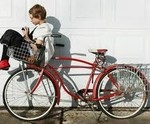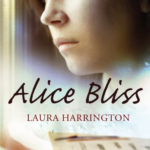When I first started hearing about Pinterest, I thought: Are you kidding me? There’s something else we’re supposed to be doing to connect to our readers/ build our platform? I was sure I didn’t have one more iota of available brain space for anything that was not actually writing.
And then my writing hit a snag. I was about half way through my second novel when I slowed to a halt. Had I lost my writing mind to too much Twitter and Facebook? Or did I need some inspiration?
I am a very visual person. Part of this stems from my theatre background; part of it is my lifelong love of design and image. I was an art history minor in college and worked at a museum and a prints and drawings gallery between college and grad school.
I decided to take a look at Pinterest to see if I could use it as a place to spark my imagination. When I began I had no idea where it would lead me, nor did I know how addictive it would be. (Warning! I now use a kitchen timer to limit my time on the site.)
And yes, I agree with some of the criticisms leveled at Pinterest. It can be a glorified form of hoarding. Many images have the gloss and emptiness of advertising. But it can also be as inspiring as exquisite paintings, cool old vintage photos, and pure color washes. I especially like finding artists and passionate collectors from other cultures to follow.
So what is Pinterest, exactly?
Pinterest is a virtual corkboard where you can pin just about any image, being careful about attribution.
Where in the world do you begin?
There’s no right or wrong way to use the site. A little bit of abandon will serve you well. You could begin with color. Time and place. Album covers, sheet music, that ever-popular playlist. You can create boards from the point of view of a character.
How do you find images?
You can use your own photographs. You can search for images across the web (be sure to familiarize yourself with proper attribution) and you can search for images within Pinterest.
Here are some of the ways I use Pinterest:
I started with a catch-all board, titled The Next Book and pinned any image that struck me. The book is set in 1966 and 1970. Using key words I searched for images of Viet Nam, black and white photos of kids from that period, peter pan collars, Simplicity patterns, lakes, cars, trucks, farmhouses. That catch-all board continues to be one of my favorites because of its variety.
Soon, however, my searches were becoming more specific. I started to get organized. A few examples:
Field Journals: Two of my characters keep field journals with a particular interest in birds. But field journals turns out to be the most delightful of categories: here you will find pencils, drawing tools, beautiful handmade books, watercolor wash techniques, etc.
Billy/ Nell: The primary relationship is between a brother and a sister. They are wild children, alive in nature. Finding images to capture their unique spirit is challenging and fun.
Are these images helping with my writing? Yes. My imagination has been shaken up; the world of my book is becoming richer.
Here are a few other ways authors might use Pinterest:
Book Trailers:
I was working with a film student on a book trailer for my first book, Alice Bliss. In our conversations she had lots of great ideas. But when she sent me her initial cache of images, I realized that these ideas, which sounded great on paper, were not capturing the spirit of the book.
Pinterest to the rescue. I created a board for Alice Bliss/ The Book Trailer where I could easily share my ideas with her. She could pin images to this board as well. It was a great place for us to test out ideas as she created a storyboard.
You might start pinning your favorite book trailers to a board as you find them. This would be a great way to kick start your first conversation with your designer.
Book Design:
My intuition tells me that Pinterest is going to have a powerful impact on book design. Using Pinterest to share ideas, looking at images and cover ideas online where most covers will be seen, testing to see if a cover “reads” in a very small format, may very well enhance the process of design.
Every writer wants a great book cover. The best covers, in a single glance, convey something strong, clear, memorable, and appealing. This is a tall order.
Most authors get cover consultation, not approval. If you’re lucky you may be asked for ideas for your cover. Here’s where Pinterest comes in. You may think you know nothing about design, but you do know about the world of your book and the internal world of your characters. Long before the issue of your cover comes up, you can use Pinterest to collect images that capture some element of your book: emotionally, visually, historically.
So what are you looking for as you begin to collect images? There are two terms I find useful: illustrate and evoke.
Images that illustrate your book or an idea in your book are not very interesting because they are limited and static. They say one thing; make one particular point. They do not engage our imagination because they are not mysterious or intriguing.
Here’s the cover for Alice Bliss in Denmark. In my opinion, this errs on the side of illustrating rather than evoking the book.
You are looking for evocative images. Photographers often call these “narrative” images. They are telling a story. What that story is, is left to the viewer’s imagination. They have layers, mystery. They spark something. They expand in the mind.
Here is the image I purchased as the home page for my website. I hope this evokes the feeling of Alice Bliss:
How do you use Pinterest?
Are you using Pinterest? In what ways does it enhance your work? How are you using images to inspire you and your writing? Do you think Pinterest can be useful for novelists?
If you’d like to take a look at the boards I’ve referenced above, click on this link: http://pinterest.com/laurharrington/
If you’re interested in looking at a great book designer’s work:
http://online.wsj.com/article/SB10000872396390443819404577637443977070530.html
And if you’re interested in some inside info from writers about book covers: http://www.theawl.com/2011/04/six-writers-tell-all-about-covers-and-blurbs




Sorry, comments are closed for this post.